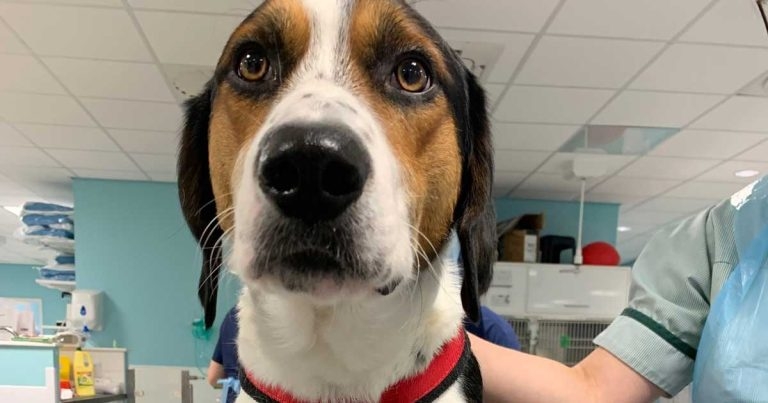1 Feb 2022
Cross-breed born with a pronounced bend and twist on the radius and ulna of his right front leg is walking normally after vets used a 3D printer to help plan complicated corrective surgery.

Baxter in preop. Image: © Vets Now.
A young dog born with a deformed leg is walking normally for the first time thanks to the steady hands of a veterinary team and the use of a 3D printer.
The one-year–old cross-breed, called Baxter, was struggling badly due to a deformity to his right front leg caused by a pronounced bend and twist on the radius and ulna.
When Baxter’s owners became concerned by his increasing lameness, he was referred by a practice in Congleton to the Vets Now hospital in Manchester.
The Vets Now team performed a CT scan on Baxter’s leg, which allowed 3D models to be produced. The models were used to plan the surgery and guide critical surgical cuts needed to correct the problem.
“They then 3D printed the leg, both as it was then and how we wanted it to look after the procedure. And they also produced custom-made 3D saw guides to use during the surgery.”
Prior to the availability of 3D printing technology, the team would have relied on x-rays and scans for measurements and to draw up the surgical strategy.
But the 3D printed legs allowed the team to make more accurate plans with increased reassurance.
Mr Aldridge added: “The software and modelling is so precise, it ensures you have the best possible option from one surgery, rather than having to make clinical approximations. The 3D guide for the saw gives you that additional precision.
“We had the guide to tell us where to cut and, once we had it in two, we had another guide to tell us how to line it back up again.”
Two metal plates were used to hold the radius together in its new position, and these were bent to shape prior to the surgery and checked against the 3D model.
The procedure took around two hours and Baxter was seen for follow-up checks that showed it had been highly successful.
Mr Aldridge said: “The limbs were symmetrical and the walking was much improved, something we would expect to continue during the rehabilitation.
“It has made a remarkable difference to [Baxter]. It turned out better than we could have expected, and in a young dog we have reduced the severity of problems later in life.”